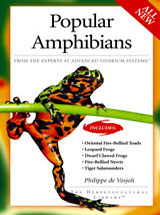Like many frogs, Bombina orientalis produces skin toxins that could be harmful and should be handled with care.
 |
Fire-bellied toads (Bombina orientalis), like many frogs, should not be placed in or near your mouth or eaten. These frogs produce skin toxins that taste foul and could be harmful. If you touch your eyes when handling a fire-bellied toad, you will experience a strong burning sensation. If this should happen, be sure to rinse your eyes with water immediately. You will also experience a burning sensation in any cuts or bruises that come into contact with a fire-bellied toad. Always wash your hands after handling these frogs.
In fire-bellied toads bred, raised, or kept long-term in captivity, the belly coloration often fades to yellow-tan or yellow-orange instead of being bright red. The skin pigment cells responsible for the bright belly coloration have vesicles for storing carotenoids, plant-derived red and yellow pigments (including carotenes and xanthophylls). To develop the bright red belly coloration, feed your crickets grated carrots or color-enhancing fish flakes that contain canthaxanthin (a type of xanthophyll) several hours prior to feeding them to your fire-bellied toads.
The variation in the ventral color of fire-bellied toads collected in the wild can be, to a degree, attributed to the availability of xanthophylls in their habitat. This explains why some wild-caught fire-bellied toads have more orange bellies and others have red bellies. Manipulating xanthophyll pigments in the diet allows you to experiment with skin color in your fire-bellied toads.
Excerpt from Popular Amphibians, part of the Advanced Vivarium Systems series with permission from its publisher, BowTie Press, a division of BowTie Inc. Purchase Popular Amphibians here.


